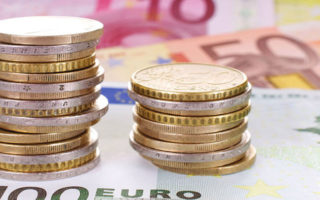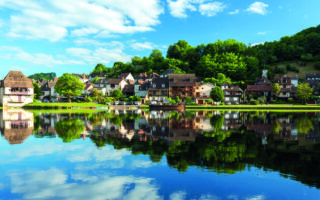Pays d’Auge, Normandy: French Property Location Guide
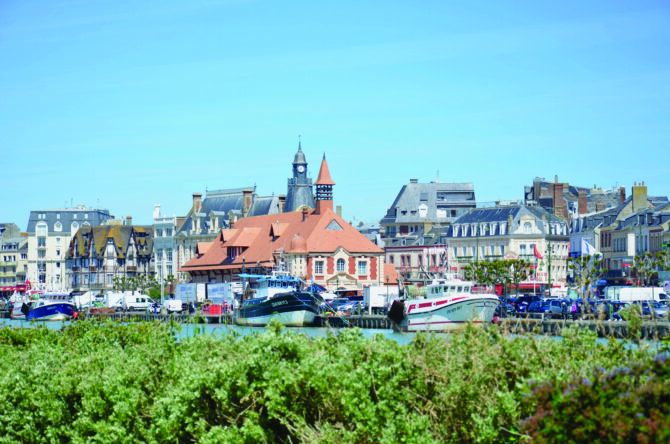
From the ‘flowery coast’ to orchards filled with apple blossom, Sarah Daly discovers what makes the Pays d’Auge in Normandy such a special place to live…
At the tender age of 10, I was lucky enough to have a French teacher at primary school who brought her native country alive for her young pupils. She instilled in me a love of France that ultimately led me to relocate here with my family six years ago. Among the exotic customs I wrote about in her class was ‘Market day in Lisieux’. There’s still nothing like a market to really capture the spirit of France, with its emphasis on good local produce and a gentle pace. The social exchange between the seller, often also the producer, and the customer is usually every bit as important as the money changing hands. This quality of life is a huge part of the appeal of the Pays d’Auge, which stretches from the medieval town of Lisieux in the south of Calvados to the seaside towns of Deauville and Trouville along the Côte Fleurie. The architecture is traditional and even exuberant, the countryside is a pretty patchwork of fields, woodlands and hedges, and the towns are lively, full of character and well-served by transport links.
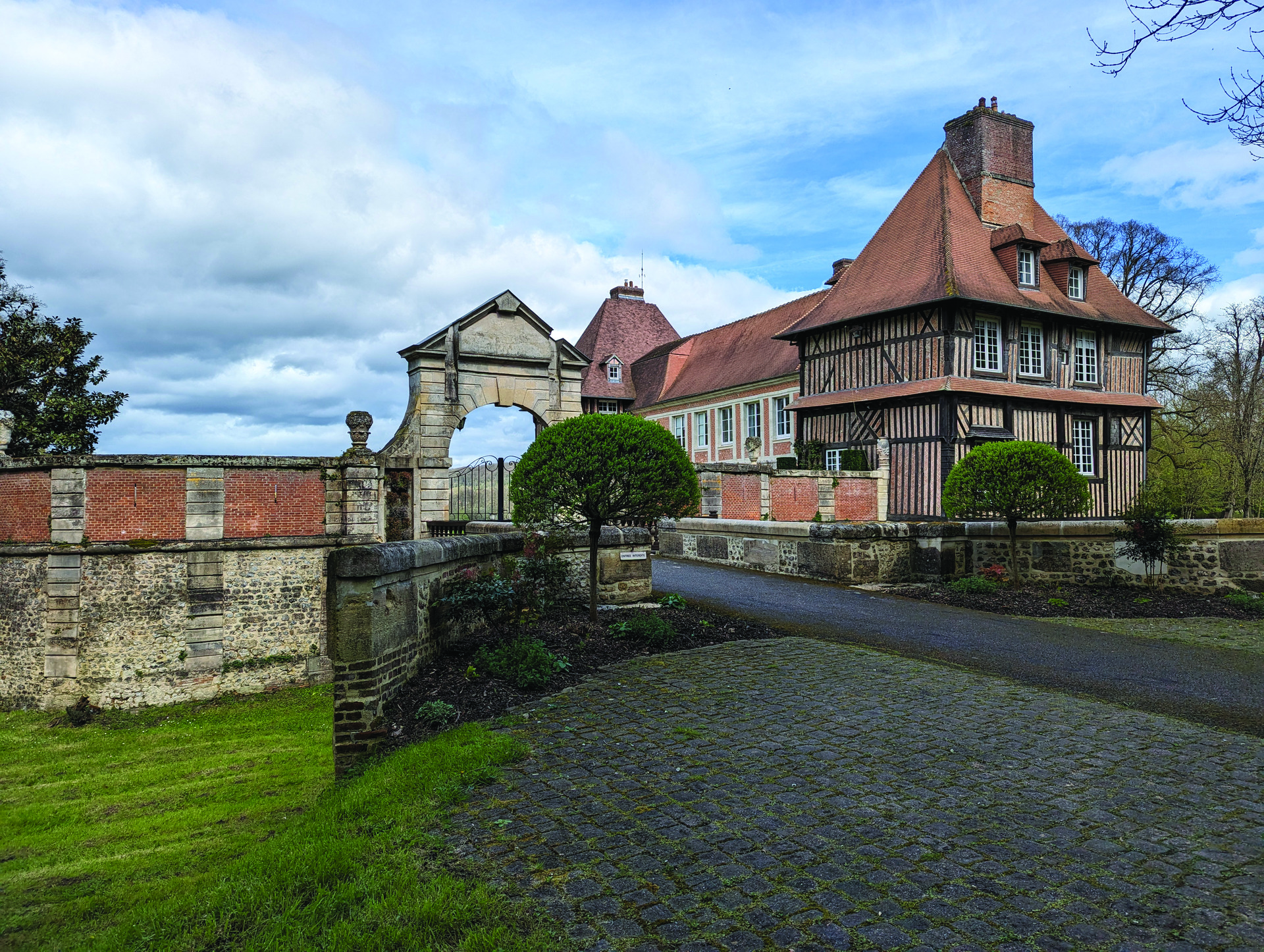
Chateau Breuil, © SARAH DALY
PLACE OF PILGRIMAGE
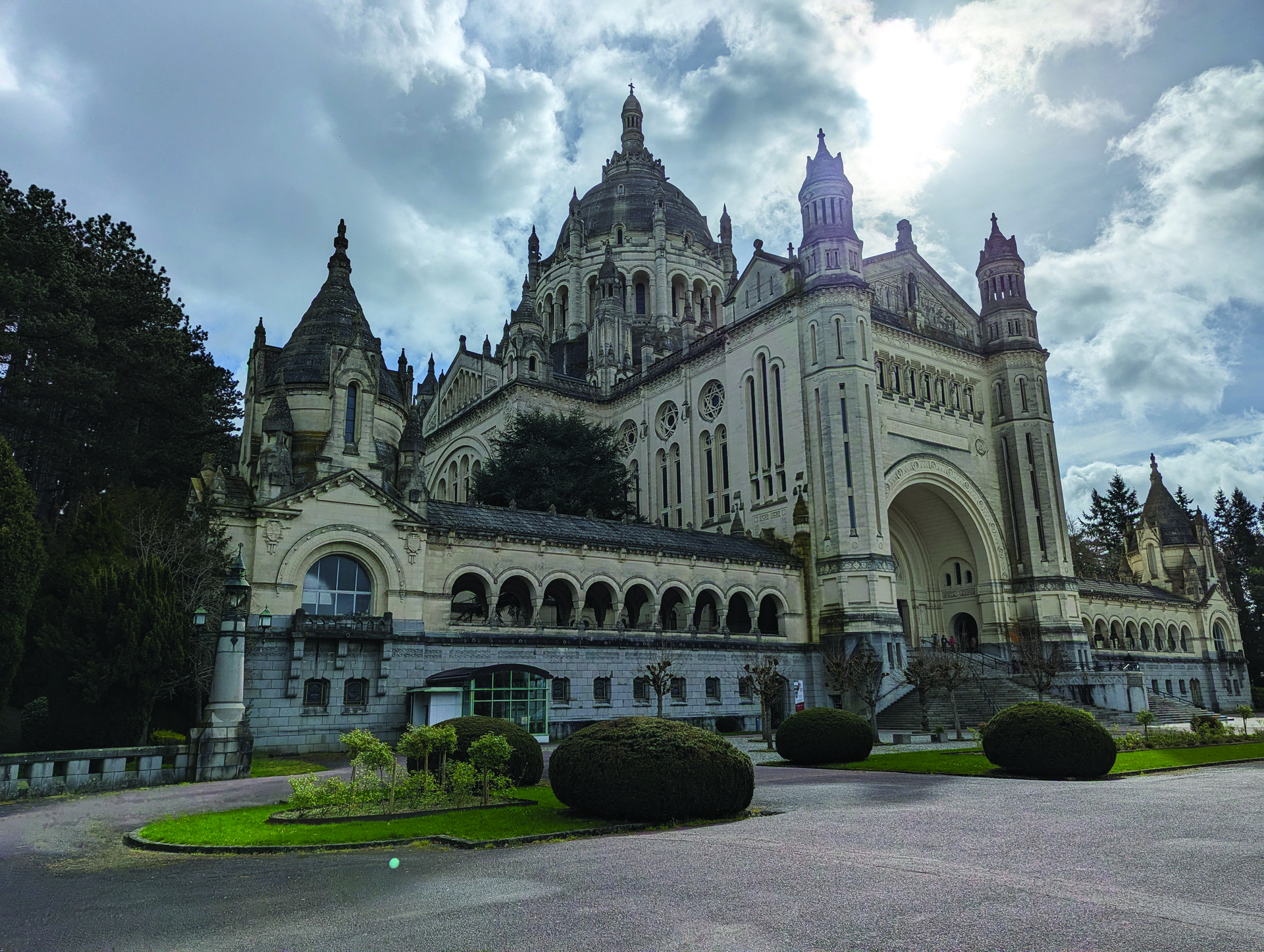
Lisieux’s basilica dominates the skyline and brings pilgrims to the town, © SARAH DALEY
Lisieux today is an important place of pilgrimage for Catholics from all over the world. Second only to Lourdes, it boasts one of the newest basilicas in France. Begun in 1929 to honour local saint Thérèse, who died in 1897, the unfinished basilica survived Allied bombardment during the Normandy Invasion in World War Two. So too did the town’s medieval cathedral, despite the fact that most of the town was destroyed.
The imposing basilica now dominates the skyline and, whether you’re religious or not, it’s worth visiting for its impressive architecture and highly colourful interior.
Although it has lost much of its medieval charm, as the capital of the Pays d’Auge, Lisieux still has much to offer local residents. With about 30,000 inhabitants, it has theatres and a cinema, museums and other cultural spaces. There are co-working venues, many sporting facilities and several schools, as well as a vibrant shopping centre with a variety of restaurants and plenty of green spaces.
GOOD CONNECTIONS
The town also has a train station that connects you to Paris or Cherbourg in under two hours, and to the coast at Trouville and Deauville in 20 minutes. The area is close to two airports, with Deauville and Caen both offering flights across France and beyond. The ports of Ouistreham and Le Havre are each about an hour’s drive away and the A13 motorway connects you to Rouen to the east and Caen to the west. All of this with pretty villages and countryside that can make you feel as though you’ve left the hustle and bustle behind you.
If your househunting takes you to the area, the fabulous Domaine Le Coq Enchanté in the village of Cambremer is a relaxing and central place to stay. Restored to a high standard, the rooms are luxurious and the food is local and exceptional. Wellbeing retreats include a chance to practice yoga in a geodome bubble or have a treetop massage before relaxing in the outdoor sauna shaped very much like an oversized barrel of the Calvados for which the area is famed.
AT HOME IN CALVADOS

© SARAH DALEY
Ann and Phil Dunbar have lived in the pretty village of Bonnebosq, between Lisieux and Pont L’Évêque, for two years. Phil says: “Ann’s family bought the house in 1985 and we helped them do it up. We lived just outside Paris for over 20 years and decided that this was the perfect place to retire to, although Ann still works as a watercolour and textile artist (anndunbarart.com).
“The countryside is beautiful and it’s so quiet with no real traffic noise. We have lots of friends here, including others who moved from Paris. We love the proximity to Pont-l’Évêque and Deauville and there’s no shortage of cultural activities and things to do. I’d advise anyone thinking of moving here to learn French and be open to everything that’s going on to avoid becoming isolated and make the most of the community you’re part of.”
BRIDGE BETWEEN COAST AND COUNTRY

© SARAH DALEY
Pont-l’Évêque is renowned as a centre of production for the cheese of the same name. Dating back to Norman times, this deliciously creamy fromage is a favourite with French buyers and, like most Normandy cheeses, it relies on the quality of the milk from the pasture on which the local cows graze. As a result, the flavour varies depending on the time of year it is made.
The town seems to embody everything that makes the Pays d’Auge so special. The medieval timber-framed buildings are firmly Norman, while the 19th- century Anglo-Norman villas are a celebration of the holiday atmosphere and creative architecture of the period.
The ancient prison is sometimes open for guided tours, and was famed for its laidback approach. Housing petty criminals, the governor allowed prisoners their freedom during the day, imposing a curfew that was, remarkably, respected.
Pont L’Évêque’s ancient lavoir, where townsfolk washed their linen while chatting to their neighbours, is well- preserved and worth a visit too.
The construction of the A13 motorway in the 1980s delivered an expected bonus to Pont-l’Évêque: the quarry from which the stone and gravel used to build it was extracted has become a ‘natural’ 60-hectare lake. It is now a centre for outdoor activities from swimming and paddle- boarding to canoeing and jet- skiing, with restaurants, a hotel and a campsite nearby.
PROPERTY MARKET
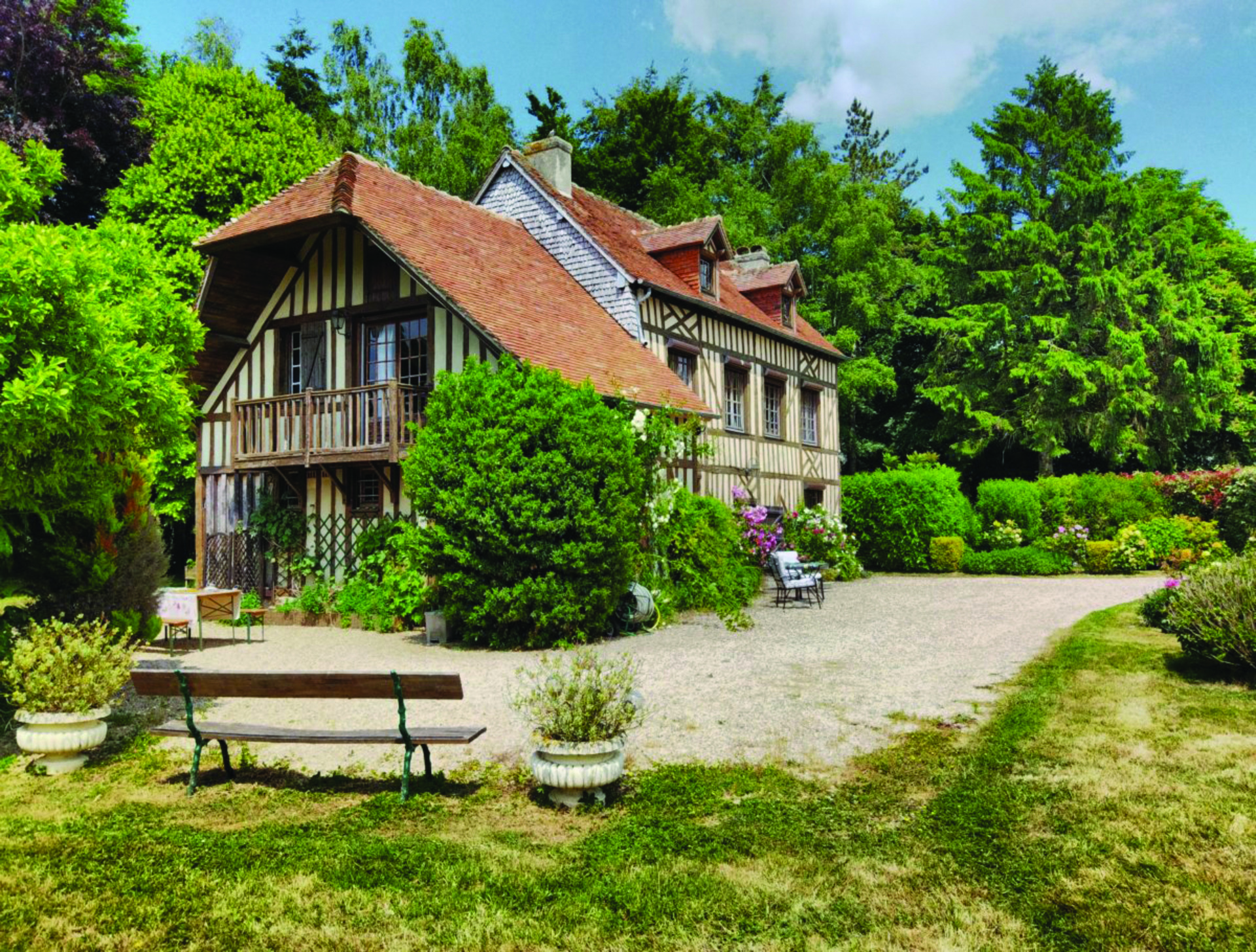
© SARAH DALEY
“We have every kind of house at every kind of price,” says Laurent Bechet, owner of LCB Immo, of the market in and around Lisieux. “With 87% of buyers looking for a main residence, this is not just a seasonal community. They love the proximity to the sea, the lovely countryside and the fact that it’s not far from Paris.”
The local market remains active and sensibly priced properties don’t tend to stay on agents’ books for very long: there has been a correction in prices back to pre-Covid levels. Although the area isn’t that well-known to English- speaking househunters, for those who love Normandy it’s perfect, and not too hot, which appeals to buyers concerned about climate change. The quality of life is great too: safe, friendly and with loads to do, whether you’re young or retired, want to join a group or head off on your own.
You can expect to pay from €350,000 for a family home in Lisieux, or from €600,000 in Pont-l’Évêque. Prices jump to around €1m if you’re looking for the same thing in Deauville. Of course, it depends on the state of the property, the amount of land and where it is located. Deauville is where buyers look for high-end properties, while Trouville is viewed as having a bit more character and authenticity.
HEAD TO THE COAST
The stylish resort of Deauville is well-known as a playground of the rich and famous, with its annual American film festival and extravagant architecture. On the other side of the Touques estuary, however, lies the town of Trouville.
This is older than its neighbour and was, allegedly, founded by the Norsemen who gave this whole region its name. It was brought to public attention by the artist Charles Mozin, who captured the beauty of the coast’s light and immortalised the traditional seaside village and its inhabitants on canvas.
Soon, other Impressionist painters were taking inspiration from this coast until the secret was well and truly out. Today Trouville is a delightful town, full of elegant and unique homes tucked away in little side streets and with bustling restaurants. The garden gates of some of its villas open directly onto the wide sandy beach, which has to be the beach equivalent of ski- in-ski-out. Happily, you can’t quite swim to your door here, but you can certainly retire to your front garden once you emerge from the waves.
For those who enjoy seafood, the fish market in Trouville is a must. With fishing boats landing at the harbour to its rear, you can select your produce and have it cooked (if necessary) and served to you in sheltered café seating on site. You just need to bring your own bread.
Local fishermen have been working with authorities to protect fish stocks in the Baie de Seine, meaning there are now plenty of fresh, healthy scallops to be had in season. Unable to resist, I sampled some perfectly cooked with cream, chives and mushroom at the traditional Pot d’Étain restaurant in Manerbe; they were so delicious that I had them again in a delicately flavoured soup at L’Aquarius restaurant right on the beach in Trouville, where they were every bit as good.
FAIRYTALE FORTRESS
The Château de St-Germain-de- Livet, a beautiful castle nestled in a valley in the village of St-Germain, is like something out of a fairytale. Originally built as a stone fortress, its 15th-century owners tore it down and remodelled it completely, building in its place a half-timbered manor that still stands today. Nearly one hundred years later, their descendants rebuilt the castle’s impressive walls, showcasing their wealth with a chequerboard pattern of pure white, and very expensive, limestone from Caen, green- glazed bricks produced in the nearby Pré-d’Auge potteries and red bricks. After a 19th-century restoration as a second home, the castle’s next owners were relatives of artist Léon Riesener and his cousin Eugène Delacroix. The castle is now owned by the town of Lisieux and the museum on site contains many of their works.
SLOW AND STEADY
If you’re looking for a slower and more considered pace of life, while remaining connected to the outside world, the Pays d’Auge could be the perfect place to begin your search. Life here is focused on good food, convivial company, beautiful countryside and vibrant cultural activities, and it moves with the seasons. The fragrant apple blossom in spring leads to delicious apple juice in autumn and cider in winter and, if you wait long enough, to the heady Calvados after which the department is named. And there are plenty of local markets that are thriving just as well today as they were back when I was first introduced to them in a Midlands classroom in the 1970s. They serve as a symbol of the sense of continuity and tradition that makes this part of France so special.
Looking for more like this?
Every issue of French Property News delivers in-depth regional buying guides, sound and trusted advice from leading experts, inspirational real life stories, renovation tales and lots of lovely properties to browse.
Lead photo credit : Fishing boats on Trouville’s waterfront delivering their catch to the ‘halle aux poissons’, ©Kevin THIBAUD
Share to: Facebook Twitter LinkedIn Email
More in buying in france, Location guide, normandy, Pays d'Auge
By Sarah Daly
Leave a reply
Your email address will not be published. Required fields are marked *


